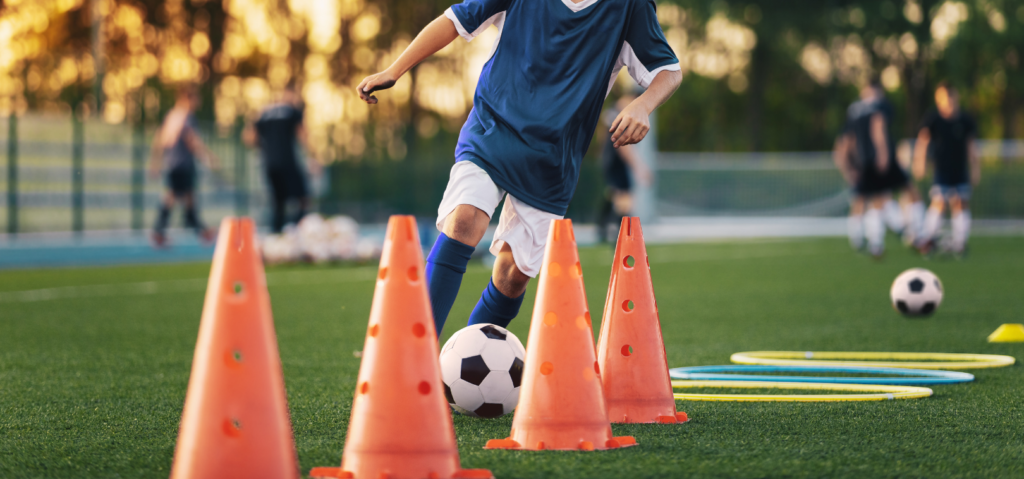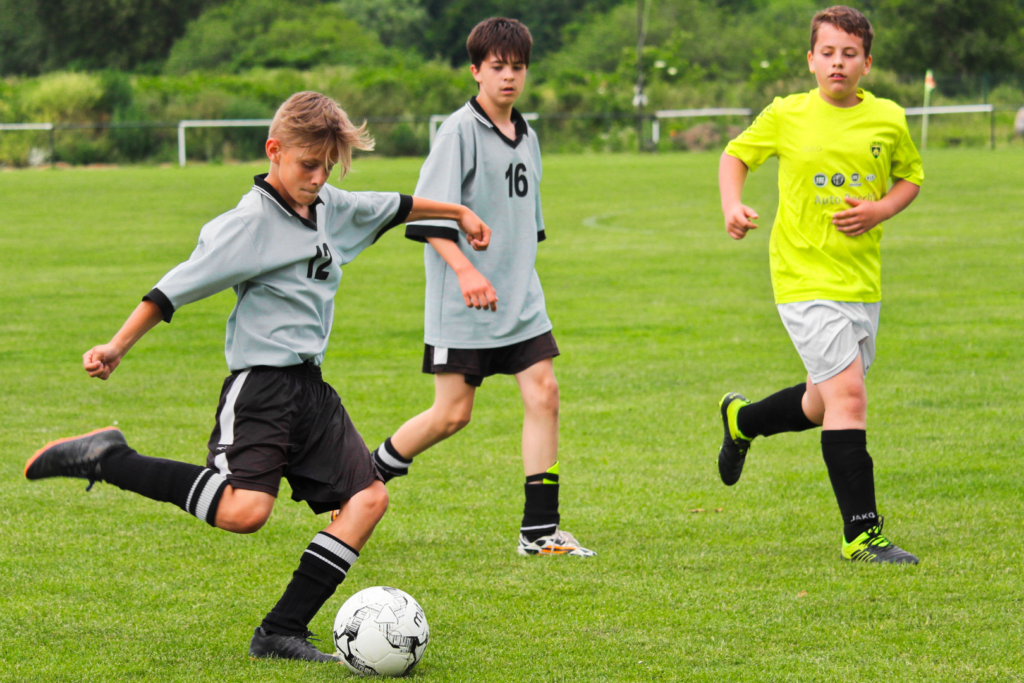When you’ve got foot pain, many people will try anything that promises to get rid…
Soccer Injury Treatment With Podiatry | Masterton
 We love soccer for so many reasons. It’s a great form of exercise for both kids and adults, it helps improve coordination, balance, dexterity, and it’s a great team sport. The fast-paced nature and the constant running, kicking, and the amount of time spent on one foot does bring with it the risk for injury to the feet and legs. Here are some of the most common injuries seen and treated by our sports podiatrists, so you know what to look out for.
We love soccer for so many reasons. It’s a great form of exercise for both kids and adults, it helps improve coordination, balance, dexterity, and it’s a great team sport. The fast-paced nature and the constant running, kicking, and the amount of time spent on one foot does bring with it the risk for injury to the feet and legs. Here are some of the most common injuries seen and treated by our sports podiatrists, so you know what to look out for.
Ankle Sprains
Given the quick stops, changes in direction and the increased amount of time spent on one foot when kicking the ball compared to other sports, ankle sprains in soccer are a frustrating and all too common occurrence among soccer players. Inversion sprains are most common, with the foot suddenly turning inwards and the ligaments on the outside of the ankle being strained to the point of damage. Eversion sprains, though much less common, can occur if a soccer ball hits outside of the ankle with force, causing damage to the ligaments on the inside of the ankle. Pain and swelling typically follow a sprain, and occasionally bruising may occur. This can make it very difficult to continue to bear weight on the injured ankle and may see you sitting out the rest of the game. Optimum recovery for ankle sprains are particularly important because repeated ankle sprains may lead to chronic ankle instability.
Jumper’s Knee
Clinically known as patellar tendinopathy, if your knee keeps playing up and keeps you in pain while you’re playing soccer, especially when your knee is bent, you may have injured your patellar tendon. Patellar tendinopathy describes damage to and inflammation of the patella tendon which runs across the front of the knee and attaches the knee cap (patella) and quadriceps to the tibia (shin bone). It works to help straighten the knee and in soccer tends to favour the leg that stays planted on the ground as opposed to the one kicking the ball. Fast changes in direction, runs and jumps can aggravate the patellar tendon, causing pain and making it difficult to bend and straighten the knee.
 Shin Splints
Shin Splints
Clinically referred to as medial tibial stress syndrome, shin splints describe pain that develops at the front of the shin bone (tibia). It is caused by excess stress and strain to the shins which may occur in multiple ways, including a bending stress on the tibia and excess strain on the musculature and tissues at the front of the legs. Poor running techniques during soccer, tight muscles and poor muscle flexibility or strength can also contribute to the development of shin pain, so stretching and working on technique must be a priority. Because shin pain can continue for long periods after it manifests, it’s important to manage it effectively to get back to activity as soon as possible.
Anterior Cruciate Ligament Injury
Your anterior cruciate ligament (ACL) is a ligament within the knee that is essential in stabilising the knee joint. With the quick direction changes, sudden stops and kicks, the twisting motion at the knee can damage, and in severe cases rupture, the ACL. This will leave the knee feeling unstable, painful and swollen and in severe cases may require surgery.
Fractures
Fractures can occur as either a stress fracture or a standard fracture. A standard fracture is a break that occurs from a high impact force – like a blow to the leg by a soccer ball. There are multiple types of these fractures depending on the way the bone cracks. A stress fracture results from repetitive stress to an area over time, so appears more like small hairline cracks. Either way, they can both be very painful and need to be effectively managed to get you out of pain and back on the field as soon as possible.
Achilles Tendinopathy
Your Achilles is the strongest tendon in your body, inserting into the back of the heel from your calf muscles. With quick starts, stops and kicks in soccer, the Achilles can take on a lot of stress and, with repetitive use and high loads, can become inflamed and painful. Players with tight calf muscles that don’t have a good stretching and warm-up routine risk putting more strain on the insertion of the Achilles causing irritation. Because damage to the Achilles can progressively worsen, and the tendon can degenerate if the injury is not effectively managed, care must be taken when pain at the Achilles starts so that it doesn’t become a longstanding injury.
Hamstrings Strains
Hamstrings injuries can occur when the hamstrings are stretched and strained past a point that they can safely handle, leading to either damage or a tear. Your hamstrings are located at the back of your thigh and stretch when you bring your leg up in front of you and straighten your knee, just like when you’re reaching out for the ball in soccer, running, or going for a powerful kick during the match.
Groin Strain
With stretching to reach for the ball, running, quickly changing direction and kicking, it’s no wonder that the muscles and ligaments surrounding the groin can become strained and painful. A groin strain, otherwise known as abductor tendinopathy, can occur when the muscles of the groin or thigh are suddenly or forcefully stretched, which may result in a tear. If you sustain a groin strain, you are likely to find that the inside of the thigh will become painful, swollen and it may be difficult to raise your knee or bring your legs together.
Masterton Sports Podiatrists
While these injuries and others can bring with them a great deal of pain, frustration and missed games, you can reduce the risk of sustaining these injuries by being aware of the risks and mindful of your actions, developing good technique, and ensuring to work on your muscle and joint strength and flexibility.
If you’re a soccer player dealing with injury, whether it’s one of the problems we’ve listed above or something else, it’s important to have your injury diagnosed and managed effectively. This is where our sports podiatrists can help.
We’ll start off with a comprehensive assessment to understand the severity of the problem, and create a tailored treatment plan to help you get back to playing the game you love. Book your appointment by calling us on 06 370 4057 or book online here.
